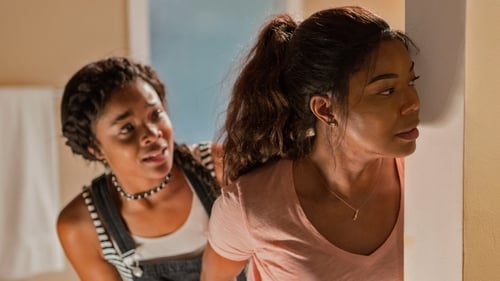
Sound Effects Editor
Gabrielle Union é uma mulher que fará o impossível para salvar seus dois filhos de serem reféns em uma casa com uma segurança impenetrável. Em Breaking In, nada e nem ninguém é capaz de deter uma mãe com uma missão quando ela está determinada.

Director
Campbell’s fictional narrative, concerning a pair of American anthropologists en route to the Irish village of Dún Chaoin, expands into a reflective investigation of filmmaking ethics and a portrait of a small community forced to confront the changing tides of traditions.

Director
From MOMA:
"This meditation on cultural imperialism and the commodification of objects is an expanded historical response to Chris Marker and Alain Resnais’ 1953 film Statues Also Die. It includes chapters on African art, a performance with the Michael Clark Company based on ideas about commodities and exchange, archival material, and a narration by Kate Hardy."

Writer
Essay film about Europe's financial crisis.

Director
Essay film about Europe's financial crisis.

Editor
Make it new John tells the story of the DeLorean car, its creator John DeLorean and the workers of the Belfast-based car plant who built it. The film deftly contrasts the DeLorean dream with its spectacular downfall during a critical period in Northern Ireland's history, and the canonisation of the car - the DMC12 - as a symbol of the American myth of mobility. As with the earlier works such as Bernadette (2008) and Falls Burns Malone Fiddles (2003), in Make it New John, Campbell fuses a documentary aesthetic with fictive moments, using existing archive news and documentary footage from the 1980s as well as new 16mm footage which imagines conversations between DeLorean factory workers. Campbell questions the documentary genre and reflects here on broader existential themes and narrative drives.

Writer
Make it new John tells the story of the DeLorean car, its creator John DeLorean and the workers of the Belfast-based car plant who built it. The film deftly contrasts the DeLorean dream with its spectacular downfall during a critical period in Northern Ireland's history, and the canonisation of the car - the DMC12 - as a symbol of the American myth of mobility. As with the earlier works such as Bernadette (2008) and Falls Burns Malone Fiddles (2003), in Make it New John, Campbell fuses a documentary aesthetic with fictive moments, using existing archive news and documentary footage from the 1980s as well as new 16mm footage which imagines conversations between DeLorean factory workers. Campbell questions the documentary genre and reflects here on broader existential themes and narrative drives.

Director
Make it new John tells the story of the DeLorean car, its creator John DeLorean and the workers of the Belfast-based car plant who built it. The film deftly contrasts the DeLorean dream with its spectacular downfall during a critical period in Northern Ireland's history, and the canonisation of the car - the DMC12 - as a symbol of the American myth of mobility. As with the earlier works such as Bernadette (2008) and Falls Burns Malone Fiddles (2003), in Make it New John, Campbell fuses a documentary aesthetic with fictive moments, using existing archive news and documentary footage from the 1980s as well as new 16mm footage which imagines conversations between DeLorean factory workers. Campbell questions the documentary genre and reflects here on broader existential themes and narrative drives.

Director
Bernadette presents an unravelling, open-ended story of the female Irish dissident and political activist, Bernadette Devlin. Duncan Campbell is interested in fusing documentary and fiction in order to assess both the subject matter and the mode of communicating it.

Director
Oh Joan, No begins in darkness; abstract darkness; primordial darkness perhaps. As the film progresses the darkness is interrupted by light or a light. A random sequence of lights ensues - theatre lights, streetlights, household lights, the lit end of a cigarette. The camera greets these interruptions in the darkness with alarm, reticence, perplexity, curiosity. The accompanying voice emits a series of grunts, moans, sighs, laughs. Nothing happens.

Director
Falls Burns Malone Fiddles draws out the processes whereby people do nothing and something happens. It is a sort of aestheticisation of everyday existence visible in the hairstyles, the fashions and aspirations of the moment.







